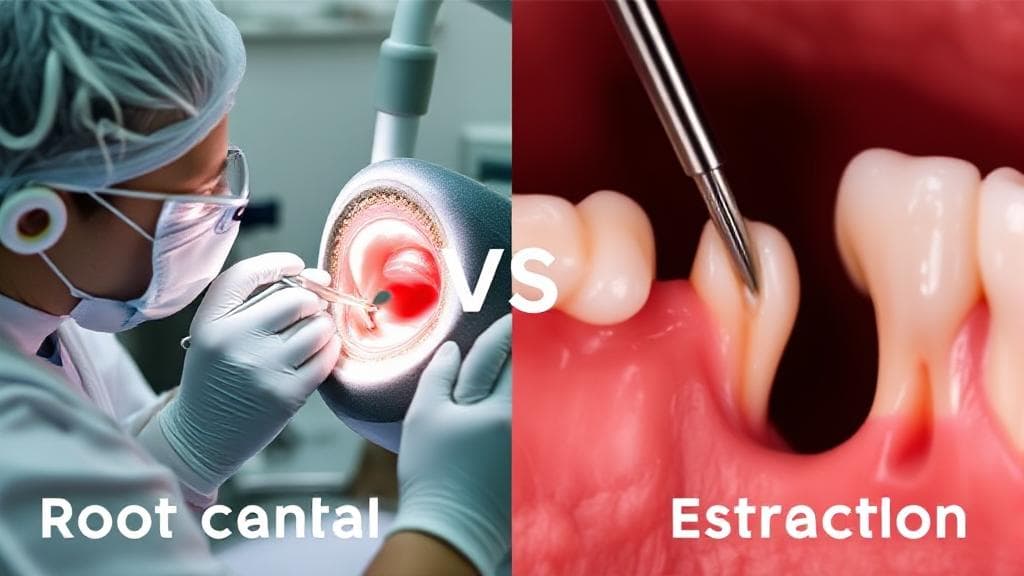Understanding Root Canal Treatment
A root canal is a procedure designed to save a severely decayed or infected tooth by removing the infected pulp while preserving the natural tooth structure. During the process, the dentist will:
- Create a small opening in the tooth
- Remove the infected pulp
- Clean and shape the root canals
- Fill the space with a rubber-like material
- Place a crown or permanent filling
Benefits of Root Canal Treatment
- Preservation of Natural Tooth: Maintains proper bite and jaw alignment
- Pain Relief: Modern techniques and anesthesia make the procedure comfortable
- Longevity: Can last a lifetime with proper care
- Normal Biting Force: Maintains natural sensation and function
- Success Rate: Approximately 95%
Drawbacks of Root Canal Treatment
- Higher initial cost compared to extraction
- May require a crown for additional protection
- Some discomfort during recovery
- Not suitable for severely damaged teeth
Understanding Tooth Extraction
Tooth extraction involves the complete removal of a tooth from its socket in the bone. This procedure is typically considered when a tooth is too damaged to be repaired.
Benefits of Extraction
- Lower initial cost
- Quick procedure
- May be the only option for severely damaged teeth
- Can eliminate infection source immediately
- Immediate removal of pain source
Drawbacks of Extraction
- Creates a gap in your smile
- May cause bone loss in the jaw
- Neighboring teeth can shift
- Often requires replacement with artificial tooth
- Additional costs for tooth replacement options
Cost Considerations
Note: Costs may vary by location and individual circumstances
| Procedure | Average Cost (without insurance) | Average Cost (with insurance) |
|---|---|---|
| Root Canal | $700-$1,800 | $200-$800 |
| Extraction | $150-$400 | $50-$150 |
| Implant (post-extraction) | $3,000-$4,500 | $1,500-$2,500 |
Recovery Expectations
Root Canal Recovery:
- Mild discomfort for a few days
- Can usually return to normal activities immediately
- May need to avoid hard foods temporarily
Extraction Recovery:
- 48-72 hours of initial healing
- Soft food diet for several days
- Need to avoid disturbing the blood clot
- Complete healing takes several weeks
Making Your Decision
The decision between procedures should consider several factors:
Choose Root Canal If:
- The tooth is salvageable
- You want to maintain natural tooth structure
- Long-term costs are a consideration
- The tooth is in a visible area
Choose Extraction If:
- The tooth is severely damaged
- Root canal isn't feasible
- Immediate cost is a primary concern
- The tooth is badly fractured
Professional Guidance
The final decision should be made in consultation with a qualified dental professional who can evaluate:
- Extent of damage or decay
- Location of the affected tooth
- Overall oral health
- Budget constraints
- Long-term dental goals
For more information, visit:
Remember that maintaining good oral hygiene and regular dental check-ups can help prevent the need for these procedures in the first place.
